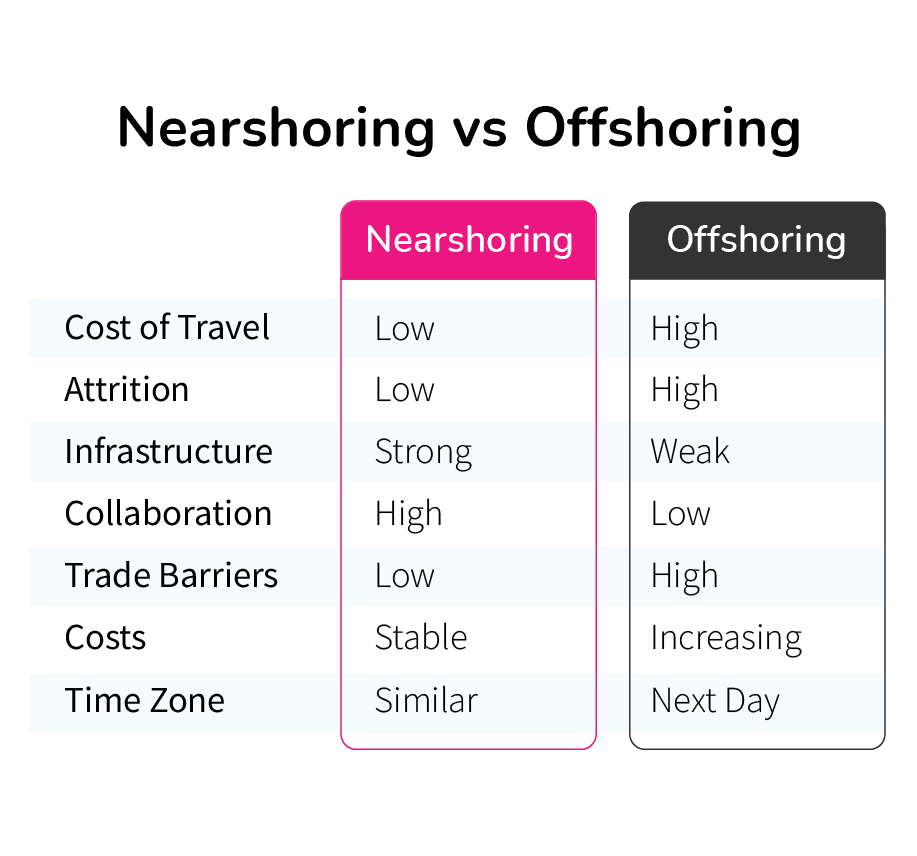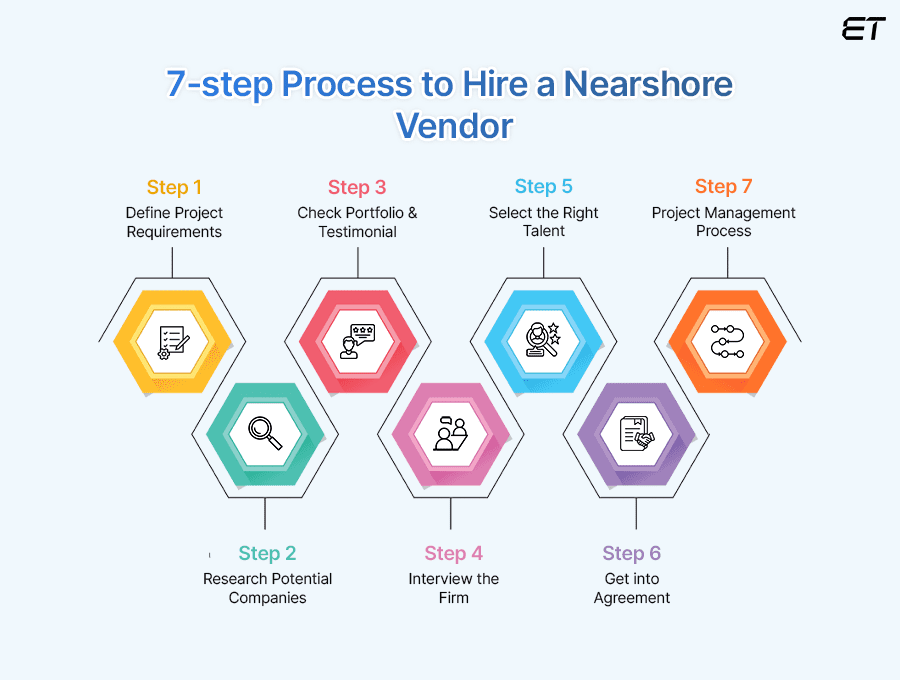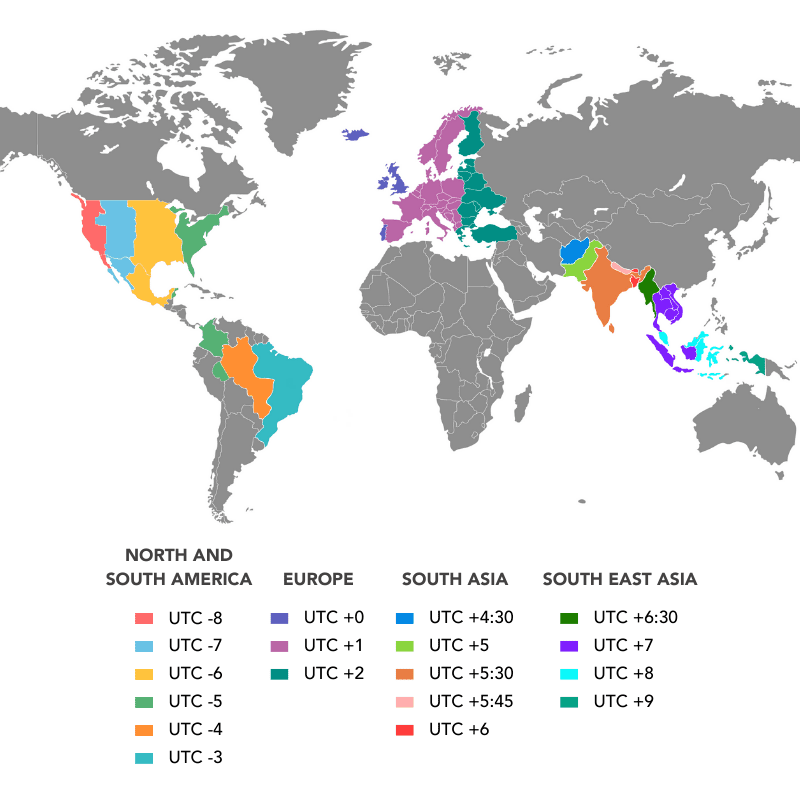Have you ever thought about how challenging tech talent acquisition has become in 2024? Let’s explore a common scenario: CEOs across industries grappling with fierce competition for skilled developers, escalating local salary demands, and the limitations of fully remote setups.
Picture this: a solution that bridges these gaps and transforms how companies scale their tech operations.
Consider this real-world scenario: As the leader of a 200-person software company, we faced stagnating growth and unsustainable development costs. Our strategic foresight led us to establish a development hub in Costa Rica, operating in the same time zone our Chicago headquarters.
The advantages? A compelling 40% reduction in development expenses, accelerated project timelines, and seamless collaboration fostered by shared working hours and cultural alignment. Key differences emerged in our ability to scale teams dynamically based on project demands.
As demonstrated by industry giants like Microsoft, IBM, and Google, this approach isn’t just a temporary fix. These tech leaders have long recognized that successful scaling hinges on strategic talent placement rather than mere recruitment numbers.
In this comprehensive breakdown, you’ll discover proven strategies for leveraging nearshore partnerships. We’ll delve into:
– Long-term cost optimization while elevating quality standards
– Building synchronized teams across compatible time zones
– Projected growth strategies that minimize traditional scaling challenges
This case study serves as your strategic guide to transforming nearshore collaborations into a sustainable competitive edge. Let’s explore the fundamentals of this approach.
What is nearshore outsourcing?

Examples of nearshore outsourcing
Let’s explore how nearshore outsourcing transforms modern business operations. Consider this: technology companies increasingly tap into specialized talent pools from neighboring countries. Picture this scenario – a Silicon Valley startup collaborating with Mexican development teams, creating cutting-edge applications while maintaining real-time communication. Similarly, European enterprises frequently partner with Polish or Romanian tech experts, leveraging their robust technical expertise.

Have you ever thought about streamlined customer experience solutions? Strategic foresight in customer support operations shows increasing adoption of regional partnerships. For example, a Canadian e-commerce platform might engage Costa Rican support teams, ensuring seamless customer interaction through shared cultural understanding and minimal time differences. This approach demonstrates the perfect balance between cost optimization and service excellence.
Action Items:
– Map out regional tech hubs aligned with your industry requirements
– Analyze case studies and success metrics from potential partners
Dive Deeper:
– How to Build Tech Team with Nearshore: Step-by-Step Details
– Explore the book “The Outsourcing Revolution” by Michael F. Corbett for a historical perspective
Types of nearshore outsourcing
As demonstrated by market trends, nearshore outsourcing encompasses diverse service categories. The technology sector leads with comprehensive solutions including custom software development, infrastructure management, and advanced security protocols. Key differences emerge when comparing various regional capabilities, with certain areas excelling in specific technical domains while offering competitive advantages in operational costs.
Customer engagement represents another cornerstone of nearshore partnerships. The projected growth in this sector highlights how businesses optimize their customer service through regional collaboration. Consider this breakdown: a U.S. retailer might partner with Colombian support specialists, enhancing their Spanish-language services while maintaining cultural alignment with their target market.
Long-term industry developments continue shaping nearshore dynamics, from AI integration to evolving customer expectations. These anticipated developments influence how companies structure their outsourcing strategies for maximum effectiveness.
Action Items:
– Conduct a strategic assessment of outsourceable business functions
– Create alignment matrices between business objectives and provider capabilities
Dive Deeper:
– Review the 2025 Guide to How Nearshore Drives Innovation for future trends
– Read “Global Outsourcing and Offshoring” by Farok J. Contractor for an in-depth exploration
– Join forums like the “Nearshore Americas” LinkedIn group to engage with industry experts
How does nearshore outsourcing work?
Let’s explore the strategic framework of nearshore partnerships. The journey begins with a comprehensive analysis of outsourceable operations, evaluating potential impact and optimization opportunities. Partner selection follows, emphasizing technical proficiency, cultural compatibility, and communication excellence.
Successful implementations start with robust contractual frameworks outlining deliverables, performance indicators, and operational parameters. Ongoing collaboration thrives through structured communication channels, regular performance reviews, and adaptive management approaches.
Future trends indicate growing advantages in geographical proximity, minimizing coordination challenges while maximizing operational efficiency. However, strategic foresight must account for regional economic fluctuations and political landscapes when developing long-term partnerships.
Action Items:
– Develop comprehensive partner evaluation frameworks incorporating technical and cultural metrics
– Establish multi-channel communication protocols for seamless collaboration
Dive Deeper:
– Study the How to Scale with Nearshore Outsourcing for strategic insights
– Read “Outsourcing for Dummies” by Ed Ashley for practical tips
Before we dive deeper into how to scale your business with nearshore staffing, it’s worth noting that this builds on some key principles of nearshore staffing. If you’re just getting started with nearshore staffing or want to refresh your understanding, our comprehensive guide on Understanding Nearshore Staffing will give you the groundwork you need. For those already familiar, let’s continue exploring how to effectively scale your business.
Benefits of nearshore partnerships
- Strategic time zone alignment enhances collaboration
- Competitive cost structure with reduced travel expenses
- Adaptable team dynamics for market responsiveness
Efficiency through cultural alignment
Picture this: teams working in perfect harmony because they share cultural touchpoints. When nearshore partners align culturally, project execution becomes seamlessly efficient. Consider this: neighboring countries often share historical connections and cultural references that create natural bridges for communication. Let’s explore how this manifests – a 2019 Deloitte report highlighted how reducing miscommunication could save businesses substantial amounts annually. Nearshore partnerships effectively mitigate these risks through natural cultural affinity.

Real-world scenarios demonstrate the power of synchronized schedules. When teams operate in overlapping time zones, problem-solving accelerates dramatically. Have you ever thought about how immediate feedback loops transform project dynamics? Teams engage in real-time collaboration without disrupting their work-life balance. Case studies consistently show that this natural timing alignment not only boosts productivity but also enhances team satisfaction, as demonstrated by research linking regular work hours to employee wellbeing.
Cost-effective solutions
Future trends point to nearshoring as a strategic cost optimizer. For example, regions like Mexico and Costa Rica deliver exceptional talent at competitive rates compared to US or European markets. The key differences in living costs naturally translate to more attractive pricing structures while maintaining high-quality output. Strategic foresight in talent acquisition through nearshoring creates substantial long-term value.

Highlighting the advantages of geographical proximity reveals another dimension of cost efficiency. Business travel becomes more manageable and economical, allowing for frequent face-to-face interactions without breaking the bank. As demonstrated by successful partnerships, this accessibility strengthens business relationships and enhances project outcomes.
Improved flexibility
Anticipated developments in nearshore models showcase remarkable operational agility. Comparison with traditional models reveals how nearshore teams can scale dynamically based on project requirements – a crucial advantage in today’s rapid-paced business environment. The seamless integration capabilities ensure smooth workflow enhancement without operational disruptions.
Projected growth in team adaptability illustrates why nearshore partnerships excel. When new team members share language and business culture understanding, onboarding accelerates significantly. This breakdown of operational flexibility demonstrates why nearshore partnerships represent a strategically sound choice for modern businesses.
But, is nearshore the ultimate solution?
A balanced exploration of nearshore partnerships reveals both advantages and disadvantages. While the cost benefits and efficiency gains are significant, strategic foresight demands thorough partner evaluation. Real-world scenarios show that misalignment in organizational objectives or corporate cultures can present challenges. Comprehensive strategic assessment remains crucial for partnership success.

“The Outsourcing Revolution” by Michael F. Corbett offers valuable insights into outsourcing strategy evaluation. This resource, alongside the Deloitte Global Outsourcing Survey, provides data-driven perspectives on successful outsourcing practices.
For operational efficiency insights, explore How Nearshore Talent Secretly Boosts Operations.
A strategic viewpoint on nearshore partnerships
Long-term analysis positions nearshore partnerships as integral to modern business strategy. As demonstrated by industry trends, the debate over optimal operational approaches continues to evolve. Tech companies seeking deeper insights can reference the Nearshore Model Breakdown for a detailed analysis of potential benefits.
Strategic foresight in partner selection extends beyond technical capabilities to encompass cultural alignment and shared values. This comprehensive approach ensures sustainable partnership success. Consider this holistic strategy essential for maximizing nearshore partnership benefits.
How to scale your business with nearshore solutions
Step 1: Identify core functions to outsource
- Map out operations suitable for external management
- Prioritize high-impact transformation opportunities
Consider this: which aspects of your operations could benefit from external expertise? Evaluate your current workflow and identify functions that don’t require direct in-house oversight. For example, specialized development projects or quality assurance processes often present excellent opportunities for nearshore partnerships. Create a detailed inventory of these potential areas.
Let’s explore the prioritization process. Future trends indicate that not every function demands outsourcing. Focus your attention on operations that could dramatically enhance your business efficiency. These typically involve specialized skill requirements or time-intensive processes. Strategic foresight in selecting these functions can accelerate growth trajectories. Developing a comprehensive assessment helps facilitate meaningful discussions with prospective partners.
Step 2: Choose the right nearshore partner
- Evaluate technical capabilities and proven track record
- Assess cultural alignment and communication infrastructure
The advantages of selecting an ideal partner cannot be overstated. Begin with a thorough analysis of their technical proficiency. Have you ever thought about their expertise in your specific domain? Examine their portfolio of successful implementations. Their capabilities should demonstrate clear alignment with your strategic objectives.

Picture this: seamless collaboration built on strong cultural understanding and effective communication. Cultural compatibility serves as the foundation for successful partnerships. Real-world scenarios prove that aligned working methodologies yield better outcomes. For instance, does their communication style match your expectations? Clear dialogue prevents project derailment. Discover more insights on partner selection here.
Consider time zones and legal factors
As demonstrated by successful partnerships, time zone alignment significantly impacts collaboration efficiency. Nearshore solutions offer key differences in operational synchronization. Projected growth depends on choosing locations with optimal working hour overlap, facilitating real-time interaction and swift problem resolution.

Let’s explore the legal landscape’s breakdown. Your partner operates within distinct regulatory frameworks. Long-term success requires understanding these variations. Case studies highlight intellectual property protection and data security as critical considerations. Establishing comprehensive agreements becomes essential. Professional legal guidance often proves invaluable for future protection.
Step 3: Implement a smooth transition plan
- Establish concrete objectives with defined timelines
- Develop robust feedback mechanisms
Anticipated developments require meticulous planning. Begin by outlining specific, measurable transition objectives. This strategic framework guides both internal teams and external partners. A comparison of expectations versus deliverables helps maintain project momentum through clearly defined milestones.
Future trends emphasize the importance of transparent communication channels. Implement structured feedback loops to ensure continuous alignment. Regular strategic reviews help identify potential improvements and maintain project trajectory. Leverage project management platforms for enhanced visibility and coordination. Explore additional implementation strategies here.
Monitor progress and adapt
Post-transition, maintaining vigilant oversight becomes crucial. Establish performance metrics to gauge success. Consider this: are outsourced functions delivering expected efficiencies? Embrace adaptability as circumstances evolve. Regular performance evaluation helps identify optimization opportunities. Strategic foresight in adjusting approaches ensures sustained goal achievement and operational excellence.
Strategies to maximize growth with nearshore teams
- Have you ever thought about the foundations of team success?
- Strategic foresight in technological implementation drives results.
- Real-world scenarios guide continuous improvement.
Strategy 1: Foster strong team relationships
Building Relationships: Let’s explore how creating powerful team connections drives nearshore success. Picture this: targeted team-building initiatives breaking down cultural barriers and workplace differences. As demonstrated by Gallup research, teams showing high engagement deliver 21% greater profitability. This breakdown illustrates how cultivating shared purpose and community spirit amplifies both output and team satisfaction.
Training and Development: Strategic foresight in professional development demonstrates genuine investment in your team’s future. Platforms like Coursera and LinkedIn Learning offer advantages through customizable learning paths. Consider this: Forbes research reveals organizations investing in employee development programs experience up to 24% stronger profit margins.
[Action Items]
- Launch bi-weekly virtual coffee sessions for organic relationship building.
- Design cross-functional mentorship initiatives to accelerate knowledge transfer.
- Create personalized learning budgets aligned with role-specific growth paths.
[Benefits]
– Projected growth in team retention and satisfaction metrics.
– Amplified team synergy.
– Enhanced collaboration driving superior outcomes.
[Dive Deeper]
– The Five Dysfunctions of a Team by Patrick Lencioni illuminates team dynamics.
– Explore “The Culture Code” by Daniel Coyle for strategic insights.
Strategy 2: Leverage technology for seamless collaboration
Project Management Tools: Exploring tools like Asana or Trello reveals their power in unifying team efforts. These platforms illuminate project progress and responsibility allocation, ensuring alignment across teams. Key differences emerge in real-world scenarios – take Kate’s case study, where Asana implementation drove a 30% efficiency boost through enhanced task and deadline management.
Communication Platforms: Future trends point toward integrated communication solutions like Slack or Microsoft Teams. These platforms support multifaceted interaction, from instant messaging to video conferencing. Highlighting Harvard Business Review findings, strategic communication can boost productivity by 25%.
[Action Items]
- Deploy cloud-based collaboration solutions.
- Establish project-specific communication channels for streamlined interaction.
- Institute regular technology assessments to validate tool effectiveness.
[Benefits]
– Accelerated project completion and reduced bottlenecks.
– Heightened operational visibility and responsibility.
– Enriched perspective sharing through structured communication.
Strategy 3: Monitor performance and adapt
Setting KPIs: Long-term success demands clear performance metrics and consistent evaluation. Illustrated by McKinsey research, implementing focused KPIs can enhance business performance by 25%. These metrics illuminate progress pathways and growth opportunities. Anticipated developments require agile responses to emerging challenges.
Adjusting Strategies: Strategic foresight demands responsive strategy modification based on real results. When established approaches fall short, embrace innovative alternatives. This adaptability proves essential in navigating modern business dynamics.
[Action Items]
- Create real-time performance monitoring systems.
- Implement comprehensive monthly performance analyses.
- Establish dynamic feedback mechanisms for rapid issue identification.
[Benefits]
– Heightened adaptability in dynamic environments.
– Concrete performance evaluation frameworks.
– Accelerated improvement cycles.
[Dive Deeper]
– Measure What Matters by John Doerr showcases transformative KPI approaches.
– Explore KPI.org for customized metric development resources.
Your Blueprint for Sustainable Growth with Nearshore
Nearshore outsourcing offers compelling advantages for strategic business growth. Picture this: dedicated teams operating in aligned time zones, cost-effective operations, and seamless cultural affinity. These key differences create a framework for accelerated project delivery and enhanced collaboration.
Let’s explore the strategic path forward: Identify optimal outsourcing opportunities, evaluate partnership potential, and develop a well-structured implementation plan. As demonstrated by real-world scenarios, collaborating with teams in neighboring countries helps organizations scale while avoiding the disadvantages of dramatic time differences or significant cultural barriers.
Consider this: organizations leveraging nearshore solutions effectively can build high-performing teams with remarkable agility. The projected growth potential includes workforce flexibility and long-term cost optimization, highlighting competitive advantages in dynamic market conditions.
For example, begin by identifying a specific business function ready for enhancement. Research potential partners in proximate regions who demonstrate strategic foresight aligned with your objectives. Establish concrete metrics, implement robust collaboration tools, and maintain consistent performance monitoring with proactive issue resolution.
The transition to nearshore solutions extends beyond immediate cost benefits, illustrated by its impact on operational resilience and organizational adaptability. Through anticipated developments and carefully selected partnerships, your organization can position itself for sustainable growth and market responsiveness.
Have you ever thought about your current business challenges? The breakdown of which ones could be transformed through nearshore collaboration awaits your strategic consideration.